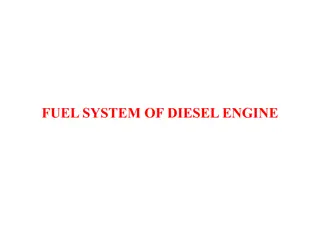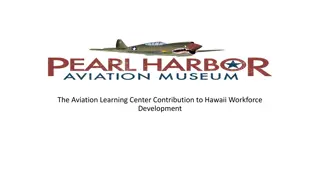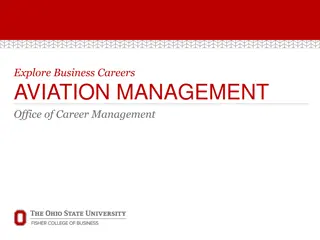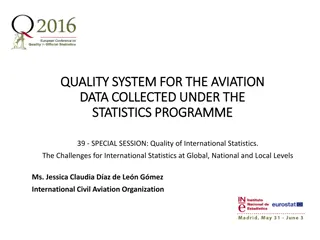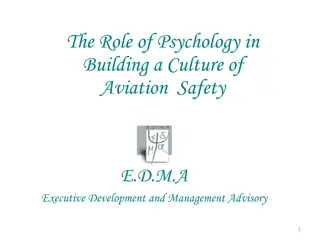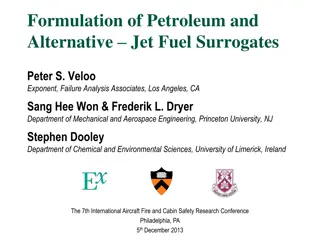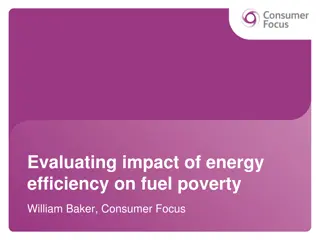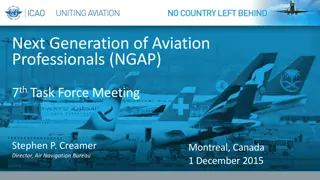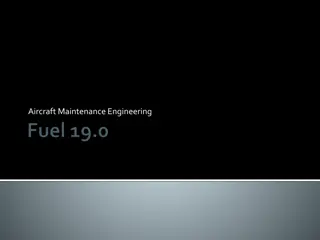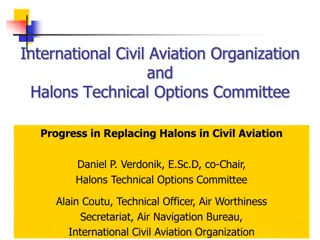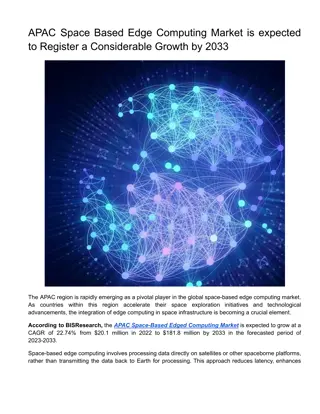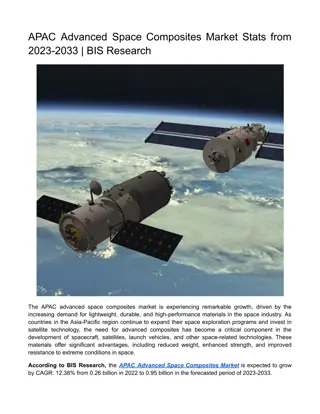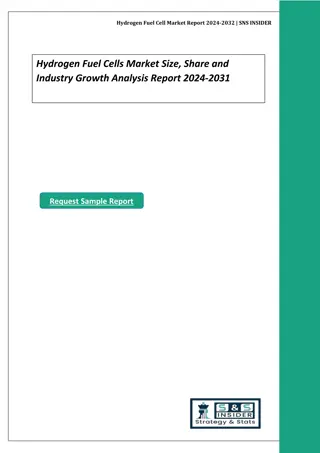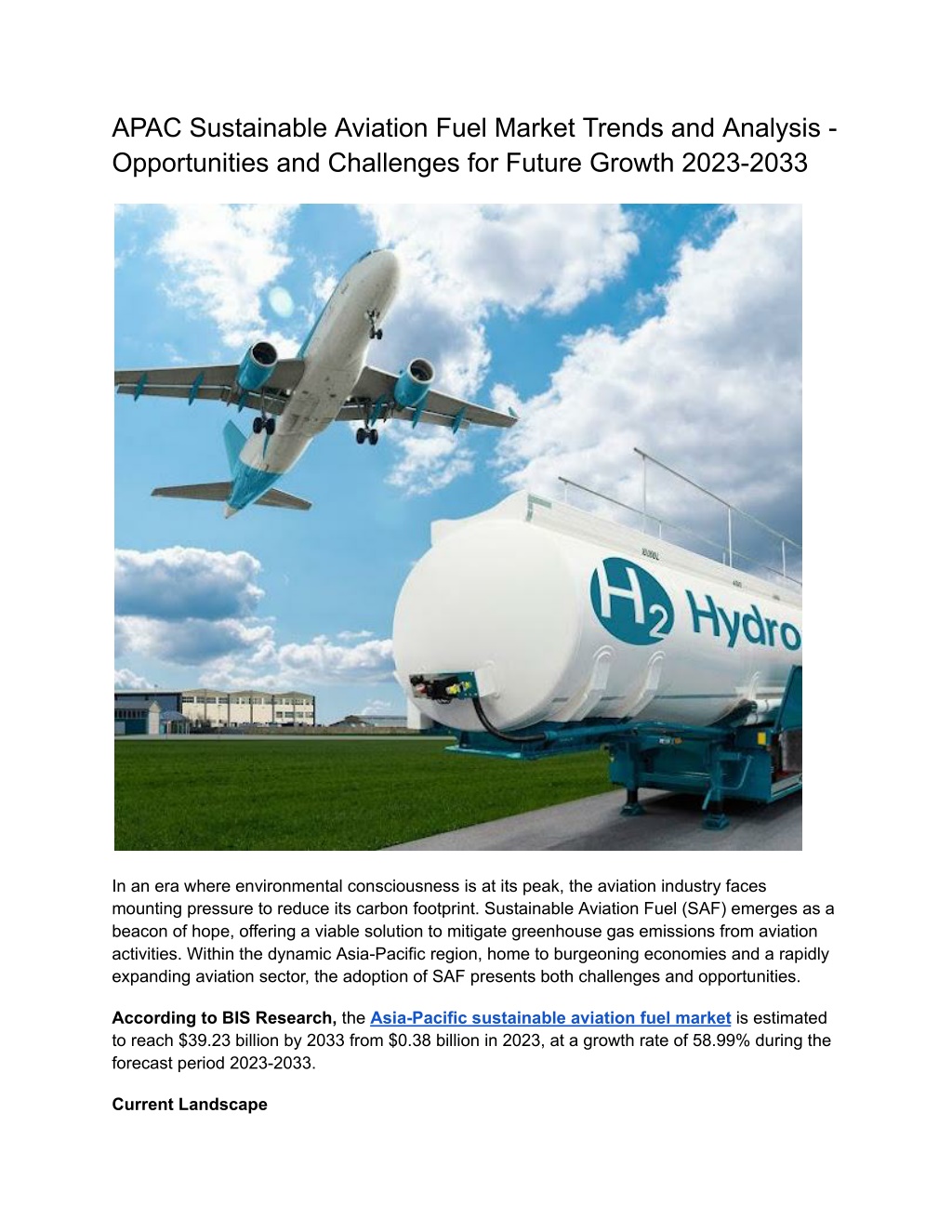
APAC Sustainable Aviation Fuel Market Trends and Analysis
The Asia-Pacific sustainable aviation fuel market is estimated to reach $39.23 billion by 2033 from $0.38 billion in 2023, at a growth rate of 58.99% during the forecast period 2023-2033.nRead Report Overview: //bisresearch.com/industry-report/a
Download Presentation

Please find below an Image/Link to download the presentation.
The content on the website is provided AS IS for your information and personal use only. It may not be sold, licensed, or shared on other websites without obtaining consent from the author. Download presentation by click this link. If you encounter any issues during the download, it is possible that the publisher has removed the file from their server.
E N D
Presentation Transcript
APAC Sustainable Aviation Fuel Market Trends and Analysis - Opportunities and Challenges for Future Growth 2023-2033 In an era where environmental consciousness is at its peak, the aviation industry faces mounting pressure to reduce its carbon footprint. Sustainable Aviation Fuel (SAF) emerges as a beacon of hope, offering a viable solution to mitigate greenhouse gas emissions from aviation activities. Within the dynamic Asia-Pacific region, home to burgeoning economies and a rapidly expanding aviation sector, the adoption of SAF presents both challenges and opportunities. According to BIS Research, the Asia-Pacific sustainable aviation fuel market is estimated to reach $39.23 billion by 2033 from $0.38 billion in 2023, at a growth rate of 58.99% during the forecast period 2023-2033. Current Landscape
The Asia-Pacific region is witnessing exponential growth in air travel demand, fueled by economic development, urbanization, and a burgeoning middle class. However, this growth comes at a significant environmental cost, with aviation accounting for a considerable share of global carbon emissions. To address this issue, stakeholders across the aviation value chain are increasingly turning to sustainable alternatives such as SAF. Currently, the Asia-Pacific SAF market is in its nascent stage, characterized by limited production capacity and relatively higher costs compared to conventional jet fuel. However, several initiatives are underway to bolster the adoption of SAF in the region. Governments, airlines, fuel producers, and industry associations are collaborating to promote research, development, and deployment of sustainable aviation fuels. APAC Sustainable Aviation Fuel Market by Application Commercial Aviation Business and General Aviation Military Aviation Unmanned Aerial Vehicle (UAV) APAC Sustainable Aviation Fuel Market Challenges 1. Economic Viability: The cost of producing SAF remains higher than conventional jet fuel due to limited economies of scale and higher feedstock costs. Achieving cost parity with conventional fuels remains a significant challenge for widespread adoption. 2. Feedstock Availability: A key challenge for SAF production in the Asia-Pacific region is the availability of sustainable feedstocks. Competition with food crops, land use concerns, and supply chain logistics pose barriers to sourcing adequate feedstock for biofuel production. 3. Infrastructure Constraints: The existing infrastructure for fuel production, distribution, and storage is primarily designed for conventional fuels. Retrofitting or building new infrastructure to accommodate SAF presents logistical and investment challenges. 4. Policy Uncertainty: Inconsistent policies and regulatory frameworks across different countries in the region create uncertainty for investors and stakeholders. Harmonizing regulations and providing long-term policy support are essential for fostering a conducive environment for SAF development. Request A Free Detailed Sample on APAC Sustainable Aviation Fuel Market! Future Prospects Despite challenges, the outlook for the Asia-Pacific Sustainable Aviation Fuel Market is promising. Continued technological advancements, supportive policies, and growing industry collaboration are expected to drive the market forward. Key strategies to accelerate market growth include:
Investment in Research and Development: Continued investment in R&D is crucial for advancing sustainable aviation fuel technologies, enhancing production efficiency, and reducing costs. Public-Private Partnerships: Collaborations between governments, industry players, and research institutions can facilitate knowledge exchange, infrastructure development, and capacity building. Supply Chain Integration: Integration of SAF production into existing biofuel and refining facilities, as well as strategic partnerships with feedstock suppliers, can improve supply chain resilience and reduce production costs. Education and Awareness: Educating stakeholders, including airlines, policymakers, investors, and the public, about the benefits of SAF and the importance of sustainability is vital for driving market demand and fostering a supportive regulatory environment. Get Detailed Insights on Aerospace Industry by BIS Research Conclusion The Asia-Pacific region stands at a critical juncture in its journey towards sustainable aviation. While challenges persist, concerted efforts from all stakeholders can unlock the full potential of sustainable aviation fuels, paving the way for a greener and more sustainable future for aviation in the Asia-Pacific region and beyond.



